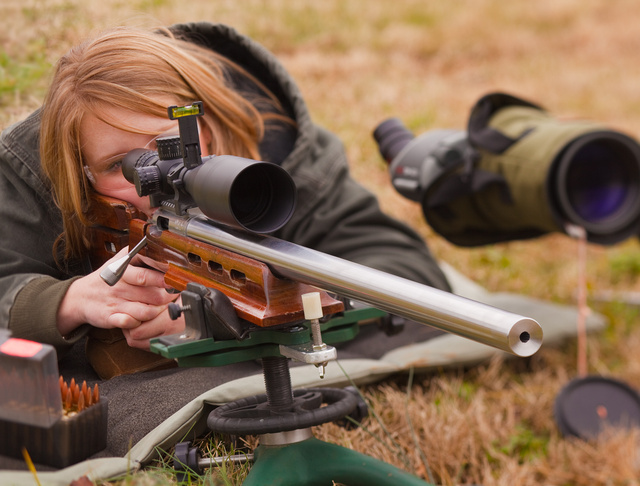Introduction to Long Range rifle shooting
 This article covers the basic equipment, information, and skills required to successfully engage in practical long-range rifle shooting. Keep in mind that this is an article and not real training, and there is no substitute for getting out there and learning from each shot.
This article covers the basic equipment, information, and skills required to successfully engage in practical long-range rifle shooting. Keep in mind that this is an article and not real training, and there is no substitute for getting out there and learning from each shot.
Introduction to Long Range rifle shooting is divided into three sections. The first is about the rifle and gear. The second discusses trajectory and optics selection in depth. The third explains how to put everything together to make hits on targets in the field.
Practical rifle shooting pits accuracy against time pressure. Jimmy Holdsworth engages multiple targets with his AI-AWM on a military slant-sniper course.
PART I: THE RIFLE & GEAR – priorities, cost, calibers, rifles, ammunition, scopes, range-finders, ancillary gear, spotting, data
PART II: OPTICS – ballistics, elevation, wind, lead, data cards, dialing elevation, parallax, first focal plane vs. second focal plane, elevation adjustment & travel, clicks, zero-stop, single- vs. multi-turn knobs, bullet-drop compensators (BDC), tube diameter, reticle features, MIL vs. MOA, reticle illumination, brightness, magnification, objective size, specific recommendations
PART III: SHOOTING – zeroing, finding a range, targets and placement, packing up, arrival, target location, positioning, making scope adjustments, engagement, follow-up, shooter/spotter communication, efficiency
What Is Practical Long-Range Rifle Shooting?
Practical precision rifle shooting involves engaging small and/or distant targets at the limit of weapon, ammunition, and shooter capability under time pressure in field settings.
Applications include but are not limited to: very small targets 1/4″-1″ at 100 to 200 yards, so-called “cold bore” shots, arbitrary unknown distance targets, moving targets, ranging, shooter/spotter communication, and combinations of all of those under time constraints.
Generally, these include everything a rifleman is likely to find in any “sniper”, “tactical”, or “field” rifle match. The typical platform is a bolt action rifle, though an auto-loader of sufficient accuracy and appropriate caliber can do the job with some trade-offs.
For our purposes, consider “long range” to reach to the load’s trans-sonic boundary (the point at which the bullet slows to 15 to 20 percent faster than Mach 1). For example, with typical 308 loads and rifles, we are interested in ranges from 25 yards out to about 700-1100 yards, depending on ambient conditions and the particular load.
It’s About Making Hits, Not Having Perfect Gear
All of the questions discussed in this article have been and will continue to be debated to death on the internet, at the hunting camp, and at the gun-shop. Equipment choices are important, but not something to obsess over. It is more important to get some quality gear and get shooting, than it is to get paralyzed with indecision due to too many choices, or change equipment too often to get good.
Remember, long-range practical shooting is about making hits in the field. Practice and skill are more important than equipment.
Buying high-quality equipment the first time around rarely brings regrets.
Pay Once For Good Gear – It’s Worth It
